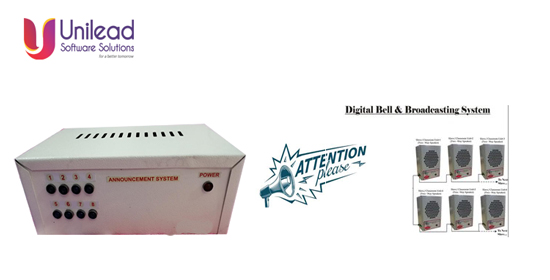
Broadcasting System in School / Collage Class rooms
Coordinated with global macroeconomic changes and the growth of social connections worldwide, education Physical classrooms are opening up to rich media content and themes Experts, between each other. This shift is largely influenced by technology and teaching trends Worldwide access to the Internet, the proliferation of mobile phone users and appreciation of these technologies, Young people, and teachers. Video seems to be the main driving force of educational reform Landscape, acting as a powerful promoter, can add value and improve the quality of the learning experience.
This article draws on many studies conducted in recent years research results worldwide. Experience in helping educational institutions implement video technology. It describes these effects in detail Technology for improving high-quality education, learning outcomes and skills development in the 21st century.
Although the impact of video and multimedia technologies on educational outcomes is an ongoing area of research, The teaching effect of video can be summarized into three key concepts:
1) Interactivity with the content (the learner is related to the visual content through dictation, notes or thinking methods, Or by applying concepts)
2) Engagement (learners are connected to visual content and attracted by video, whether or not they are on demand Or real time)
3) Knowledge transfer and memory (learners may remember and retain concepts better than others) Teaching media)
Since videos combine multiple data (images, motion, sound, text) in a complementary way, they learn Compared with other tools, it is easier to adjust its learning method and learning progress students. Through video, learners can better control the information they receive and get more opportunities Learn more by being able to stop, rewind, fast forward, and replay content as many times as necessary.
Impact of Board Casting system in School’s & Colleges
Although there are still open questions about the true impact of video and other multimedia materials on education, Extensive research shows how video and multimedia tools support and enhance learning. Some conclusions The research analyzed in this article shows the following enhancements:
Scores and performance: On-demand videos have been shown to affect grades and test performance in the following ways Extensive research conducted by universities. Some studies have concluded that The students participating in [watching streaming video] perform better than those in traditional face-to-face classrooms.
School Preparation: Educational TV has proven to have a positive impact on school preparation, including Letter and number recognition. Found a positive relationship between childhood views on education TV and cognitive performance at preschool and university level. Student collaboration skills: Watching videos clearly encourages students to develop their abilities The ability to solve problems through cooperation with others is of great significance to future workers in the world More driven by teamwork, collaboration and multicultural awareness.
Overall academic development: Educational TV can have a positive impact on intellectuals and academia Child development. Similarly, many studies have begun to confirm that hybrid learning is combinatorial learning The number of face-to-face and online guidance can be equal to or better than face-to-face or online-only programs. Many hybrid learning programs include on-demand or real-time video as program components.
Workforce preparation: video content and video literacy-fully understand how to take full advantage Video as a communication tool, and knowing how to use the technology itself, is considered a core capability When the student leaves the university. Videos can enhance students ’skills, so they can better prepare students Including creativity, social skills, public attention and civic responsibility, as well as self-esteem and Cultural understanding.